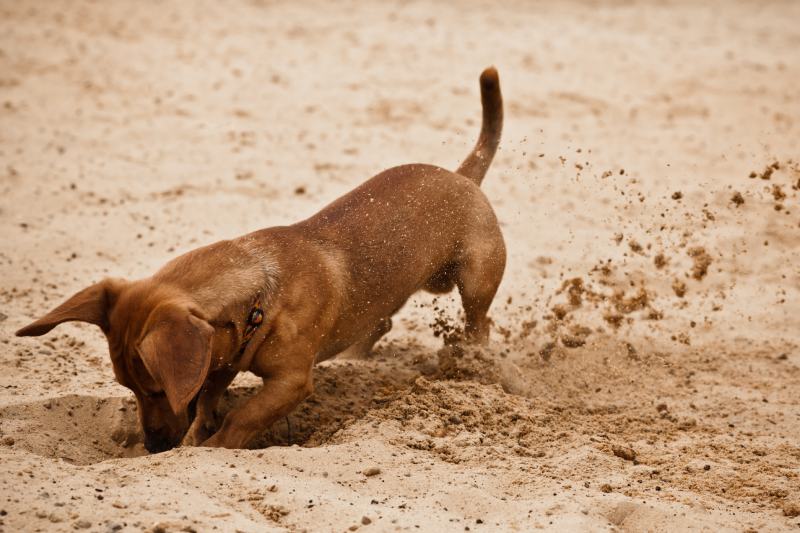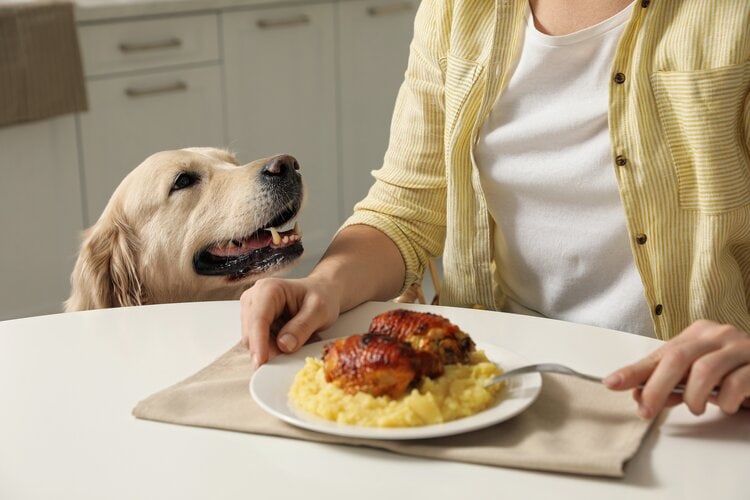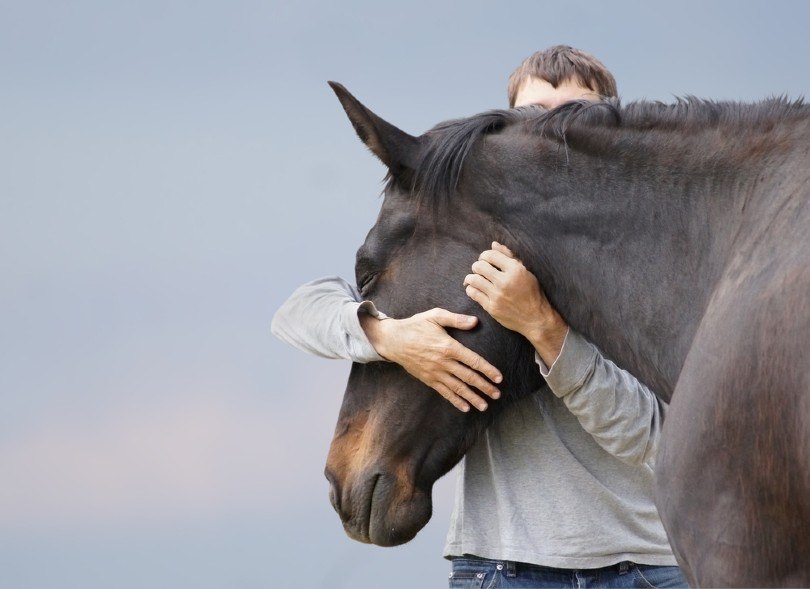VET APPROVED

The information is current and up-to-date in accordance with the latest veterinarian research.
Learn more »Click to Skip Ahead
Is your dog digging holes in the garden, and you can’t stand having a minefield in your outdoor area? Would you like your dog to no longer feel like he needs to take care of the gardening? Then you are in the right place! Here you will find all the reasons that push your dog to dig holes, but especially the advice and tips to eliminate or reduce this frustrating behavior.

Different Types of Destructive Behavior
Before we get to the specific causes of this pesky behavior and how to deal with it, let’s take a look at the signs and types of destructive behavior. Because there are many degrees of the latter and digging craters in your yard (with no other signs associated with this habit) is not necessarily abnormal in a healthy dog. Annoying, yes. Exasperating, absolutely. But there are solutions that are easy to implement. As long as you’re willing to take the time to understand your dog’s behavior better beforehand.
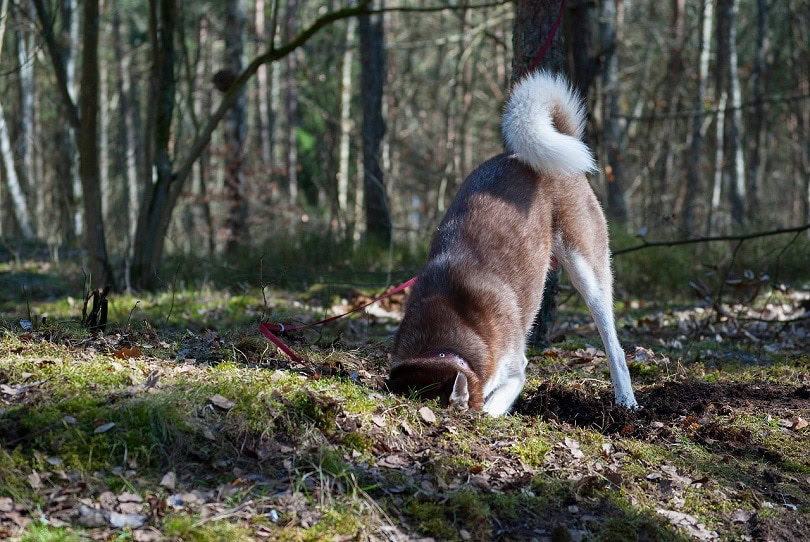
Type 1: Primary Destructive Behavior
Suppose your dog exhibits only one type of annoying behavior (for example, chewing on your favorite shoes or digging holes in your yard) but doesn’t appear to be anxious or aggressive. In that case, this is primary destructive behavior. It could be anything from destroying your couch to eating your exotic plants. He can also engage in this behavior whether you’re at home or not. It doesn’t matter in this case.
Type 2: Secondary Destructive Behavior
On the other hand, if your pup does these things only when you’re around, this is secondary destructive behavior. He wants to get your attention. Besides, he will present other signs like aggressiveness, distress, or agitation. Secondary destructive behaviors have roots in underlying medical, psychological, or environmental stressors rather than natural instincts.
Other Types of Destructive Behavior
There are a few other types of behavior that your dogs can exhibit, but for the sake of this article, we won’t go into details for each of them.
- Excessive licking/biting
- Shredding
- Escape attempts
- Destructive vocalizations
If you would ever encounter some of these issues, don’t hesitate to contact your veterinarian and consult your dog’s behavior with them.
Why Is My Dog Digging Holes in My Yard?
Now that you know the different categories of destructive behavior, let’s discuss the main causes of this common behavior in dogs:
- Your dog is bored. He is perhaps left alone too often or too long in the garden, and he has found this activity just to get out of boredom.
- Your dog is too hot. He digs holes to find a little coolness in the ground to bury himself in it.
- Your dog has realized that this is getting your attention. As soon as he digs, you take care of him (even if it’s to scold him), and he loves it. It’s like a little toddler knocking on his toys and looking at you to get your attention.
- Your dog is not getting enough exercise. He does this enraging activity only to burn off his excess daily energy.
- Your dog is triggered by insects underground. Their impressive sense of smell and natural predatory instincts will exacerbate this behavior if they lack mental stimulation.

Top 5 Tips to Stop Your Dog Digging
1. Respect Your Dog’s Specific Needs
There is nothing worse than a dog who does not spend enough energy every day. This can lead to several behavioral issues, like, you guessed it, craters in your yard.
- Physical activity. A dog needs to be walked outside for a minimum of 30 minutes a day, whatever the breed. Of course, some species, like Azawakh or Siberian Huskies, will have a higher expense requirement than Chihuahuas.
- Mental stimulation. Your dog needs daily mental stimulation, whether it is a puppy or an older dog. To stimulate your dog mentally, you can play educational and fun games or even trick learning sessions.
- Olfactory stimulation. The smell of the dog being its most developed sense, it is essential to stimulate it. You could do tracking exercises (indoors or in the garden) and hikes in new surroundings, where he can sniff out lots of new smells.
- Socialization. Your dog is a social creature who needs to be in contact with his congeners. But these “meetings” must be positive, regular, and controlled; don’t pick just any other dog as a potential friend if you don’t want this encounter to end in a fight.
2. Find Your Dog Another Hobby
A bored dog will always find occupations. And be aware that a dog can get bored very quickly if it has been in the same place for a long time. After a while, your garden loses its charm for your pup eager for new stimulation.
Since boredom is a dog’s worst enemy, it’s up to you, the owner, to find your pet other occupations. Give him a bone or a toy to chew on, hide treats all over the garden, leave him a Kong full of goodies, etc. Use your imagination to distract him from his habit of digging holes all over the place. Just be very careful about when you present the enrichment; you want to do this before he starts to avoid reinforcing the very behavior you are trying to exterminate. Offer him the enrichment as a reward for being calm or after a short and positive training session.
3. Use Positive Reinforcement
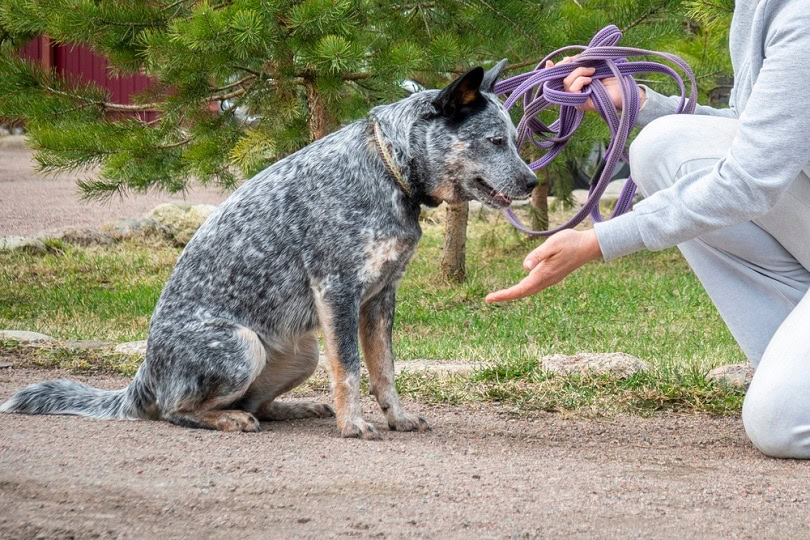
Simply put, you need to educate your dog to stop digging. What’s the best way to do this? By using the method of positive reinforcement, which is a gentle method without violence and which generally gives excellent results. Simply observe your dog and reward him for offering calm alternative behaviors. You might even want to consider installing a treat-dispensing camera to reward your dog for calm, nondestructive behaviors when you’re not in the room.
[/su_list][/su_box]- Tips: If you can successfully anticipate your dog’s intentions, it will be easier for you to stop him before he makes his mischief, rather than trying to stop him along the way. For example, if your dog starts sniffing the ground and scratching with his front paws, he is probably about to dig. So, during positive reinforcement training, observe your dog’s actions so that you can anticipate his next move. Redirecting them at this point is another behavior modification alternative.
4. Accept Holes Only in a Demarcated Area
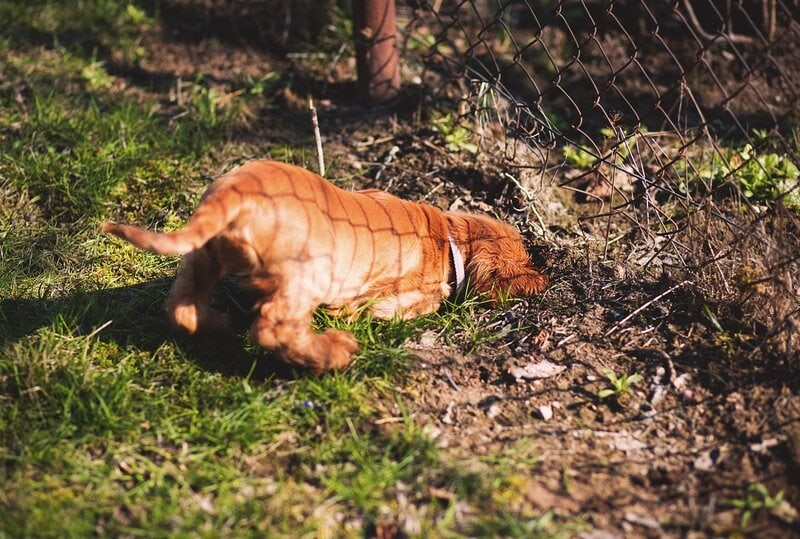
This trick is to allow your dog to dig holes in a specific spot. Don’t hesitate to mark a clear boundary to help the dog find his way.
To successfully teach your pup to dig only in specific places, you will need to put your effort into it and encourage it to do so in a very positive way.
And if your dog isn’t digging in the right place, redirect him to dig in the designated area. You can also add some deterrent spray or even chicken wire in the spots you want him to avoid.
5. Cool Them Off
If, after analysing the triggers, you have concluded that your dog reproduces this behavior because he is too hot, make him a little oasis in your yard. Make a corner for him in the shade, fill a basin with water, dig a small hole where he will have the right to bury himself.


Conclusion
Dog digging is a common problem, but it is possible to stop this behavior. You only need to understand better the underlying factors and do some proactive problem-solving. However, a consultation with your veterinarian will also be of great help since there may be underlying health causes.
Featured Image Credit: Denis Babenko, Shutterstock
